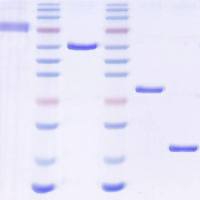HSV Mutagenesis
互联网
689
Herpes genomes are large and complex, with many interactions among herpes encoded proteins, herpes DNA and RNA, and the host cell. These interactions begin as the virus enters the cell, and continue as the decision for latency or lytic replication is made. Correctly regulated gene expression then allows herpes genes to be expressed in a temporally regulated manner and to subvert the host cell metabolism in favor of virus production. Finally, infectious progeny virions are assembled and released. Exploring the function of the many herpes-encoded proteins and the mechanisms to control their expression during these processes thus requires a fine dissection of the herpes genome, so as to allow protein-coding regions to be linked with function and control DNA regions to be identified.







